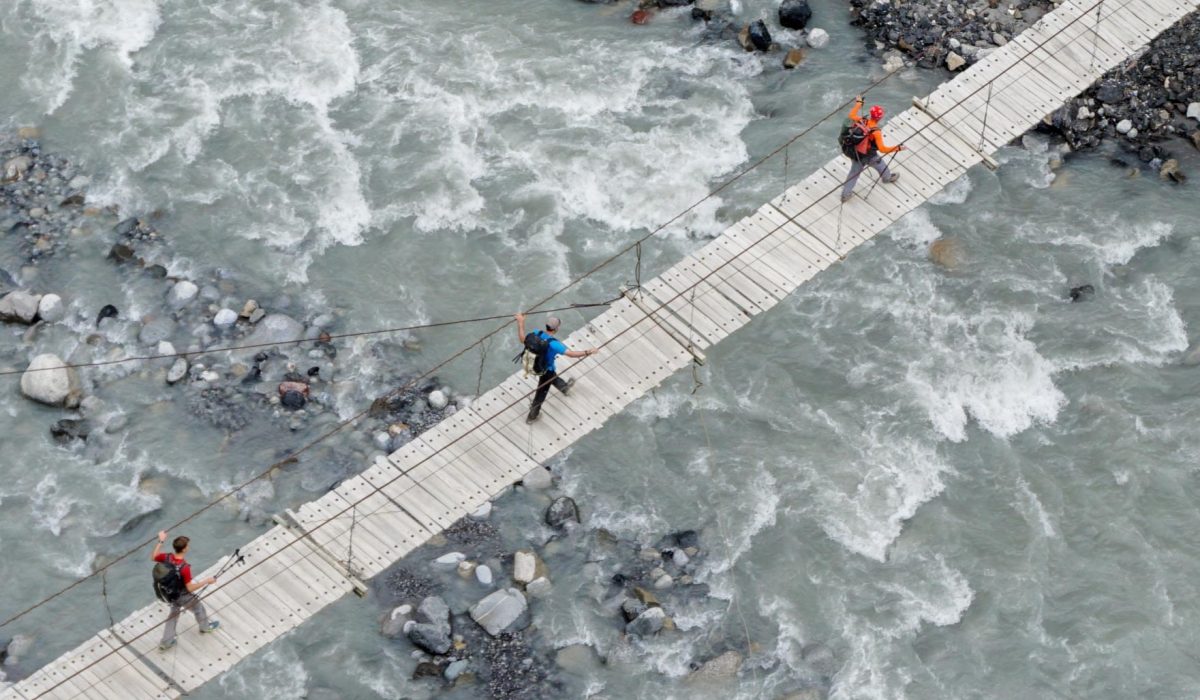
As well as adhering to best practices in terms of waste management and leave no trace, expeditions are also expected to consider their likely environmental and cultural impact at the planning stage, and include details of how they will reduce and/or mitigate impacts in their funding application. Once the expedition is concluded, their final report must also include details of how these plans worked in practice. (You can read reports from MEF-supported expeditions here).
With the guidelines having now been in place for a few years, we wanted to share some of the steps that MEF expeditions have taken to reduce their impact, in the hope that their ideas and approaches will prove useful for other expedition organisers.
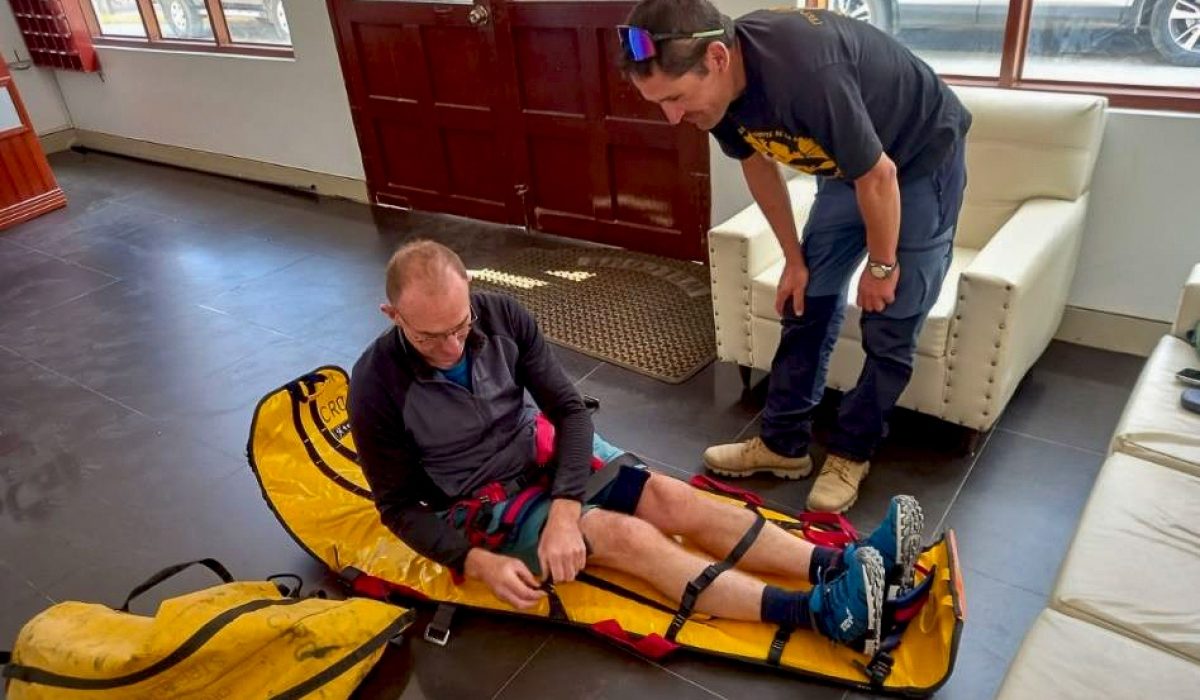
Leaving Something Behind
While the old adage says “taken only photos, leave only footprints”, there are times when it can be appropriate to leave something in-country.
Multi-year undertakings like the Mulu Caves Project have elected to leave a store of equipment at the expedition destination. This saves the cost and environmental impact of shipping equipment internationally every year and can provide income to local people or regional authorities who rent out the storage space.
Other expeditions have chosen to donate equipment to local groups engaged in mountaineering, caving or scientific research. For example, the Pico del Oro Plateau Caving Expedition left emergency equipment, including stretchers (pictured above), with Peruvian cavers following their 2023 expedition. Some have gone even further, viewing their expeditions as a broader cultural experience and arranging visits to local projects such as schools, donating money and resources for the projects to use as they see fit.

Engaging with Local Government
A number of recent MEF expeditions have partnered with regional elected officials to raise issues of concern and suggest possible solutions. The 2024 K7 South West Ridge Expedition noticed large bags of rubbish being left in the base camp area, despite systems supposedly being in place to address this. They fed back this issue to the Minister of Tourism who was able to see that the problem was resolved.
At a more proactive level, the Footsteps 55 expedition organised a pilot programme for an ‘Eco Porter’ with responsibility for the expedition’s environmental impact. Following a meeting with the President of Jugal, they are suggesting the creation of an Eco Warden role for the Jugal region, paid for by contributions from expedition teams and responsible not only for the conduct of expeditions, but also for educating local people and coordinating recycling and waste-disposal sites.
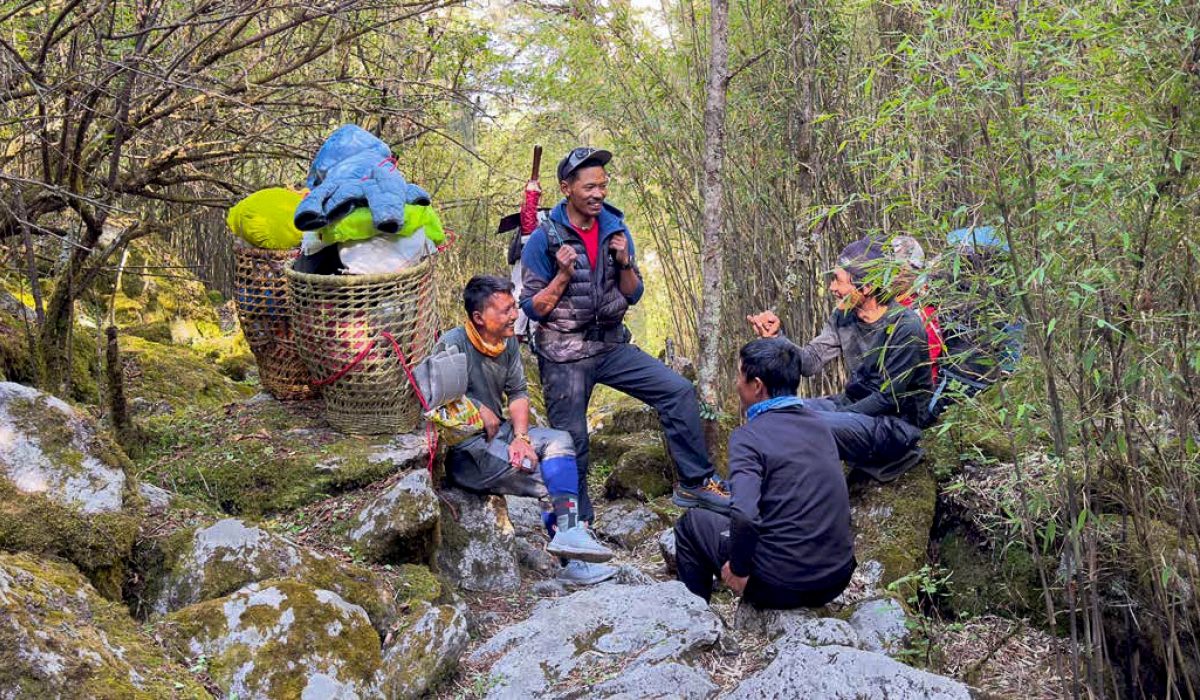
Hiring and Buying Locally
Trying, wherever possible, to hire expedition staff locally and to patronise local businesses is one of the core principles of our new guidance. This ensures that expeditions have a positive economic impact on the areas they visit and that local people do not see visitors as extractive outsiders.
Project Light and Fast embodied this principle perfectly on their visit to western Nepal. Shopping was carried out locally in Surkhet, Nepalgunj and Jumla; a local guide and porters were hired in Jumla and the expedition made use of local homestays for accommodation.
Above all, expeditions are encouraged to pay staff fairly and directly, rather than through an intermediary and we are seeing increasing numbers of expeditions hiring and paying their staff directly rather than through a third-party, to help ensure that workers receive their full wage.
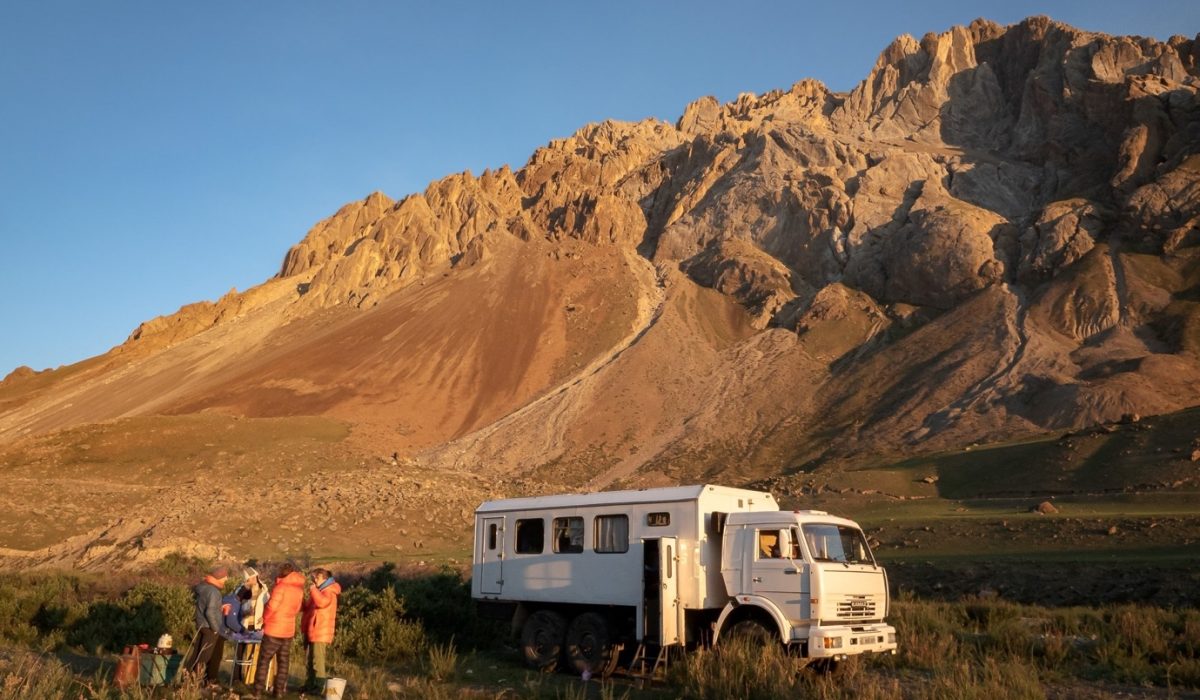
Travel Methods and Carbon Offsetting
Of course the largest environmental impact of most expeditions is travel. This is an unavoidable feature of the expedition process, but this is not to say that we shouldn’t be conscious of it or that we shouldn’t consider ways to lessen its impact.
Historically, many expeditions used to travel overland to their destinations rather than flying. While we have not seen a large-scale return to this practice, some expeditions, like the Granada Plateau Expedition, have elected to make in-country travel arrangements by public transport. More broadly, the MEF generally will not support expeditions which use planes or helicopters to access or leave their objectives, except in regions where this is unavoidable.
We believe it is fair to say that carbon offsetting cannot be a substitute for reducing emissions. However, in those circumstances where air travel is unavoidable, such as for exploratory expeditions like those we fund, it is a good way of providing support to projects working to protect the environment and sequester carbon.
Since introducing a requirement for expeditions to calculate and offset their carbon emissions, we have been impressed with the thoughtful approach of many of our expedition teams, who have been assiduous and diligent in their selection of appropriate schemes, frequently contributing more than their calculated requirement to gold standard projects.
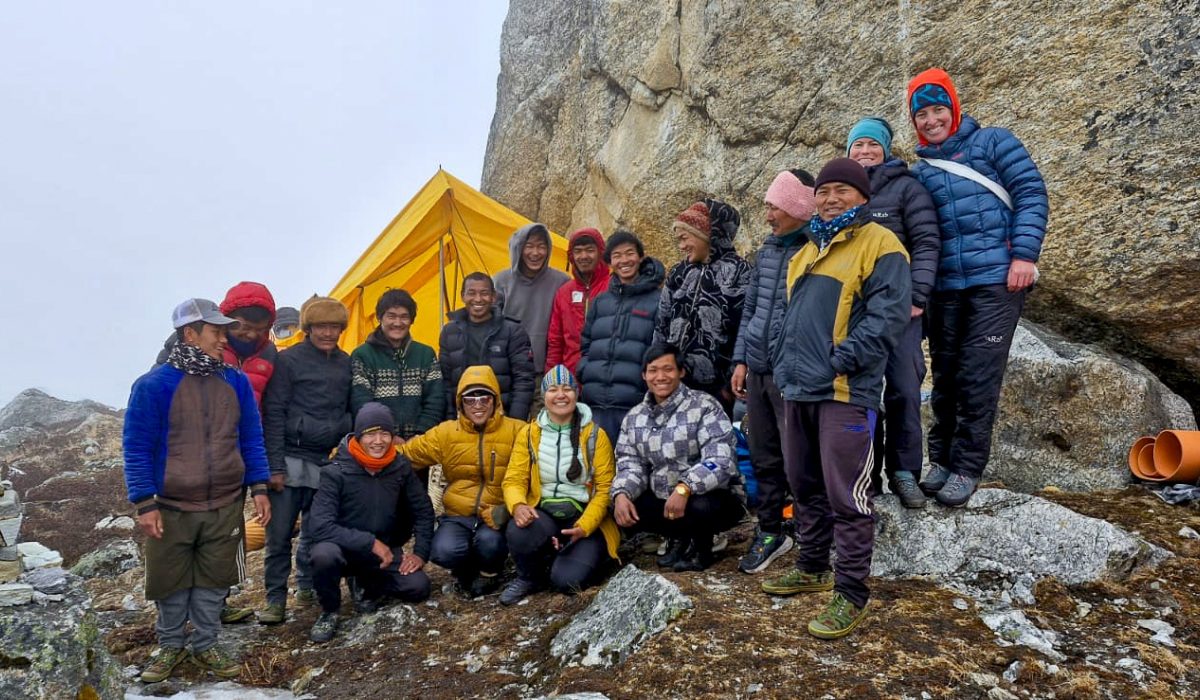
Under current circumstances, it is not possible for exploratory expeditions to have no environmental or cultural impact at all. The MEF seeks to balance our belief in the value of exploratory expeditions with our respect for the natural world and local communities. While we acknowledge that our work will have an impact, we are increasingly working to minimise this by requiring our expeditions to reach and go beyond current best practice. We will continue to report on our progress and share the learnings from our expeditions so that others can take steps to lessen the impact of their own exploration.
You can read the full text of our Environmental and Social Guidelines here.